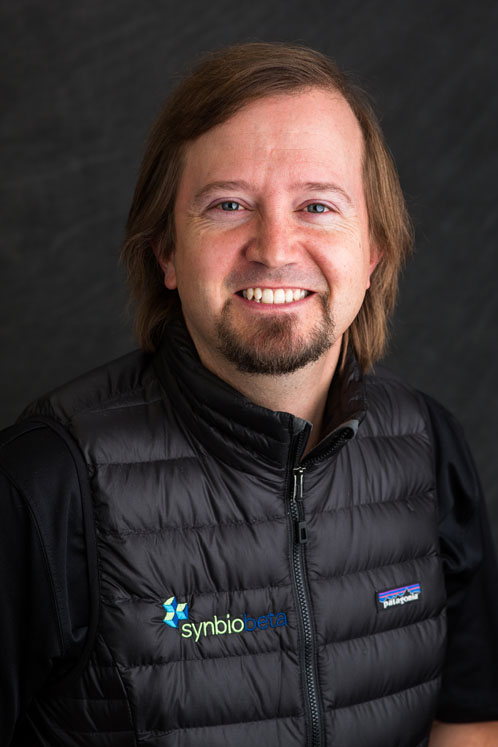The therapeutic breakthroughs that are hitting the pages of scientific publications and news media outlets almost every day can make it feel as though this revolutionary medical progress came out of thin air.
However, biological understanding, the work of scientists worldwide and enabling technologies have converged to deliver today’s rapid progress. The synthetic biology revolution that we are now experiencing has been quite a journey.
The biochemistry of the 1980s focused on how to analyse biological materials and understand how they work. In the 1990s, we developed ways to screen more quickly and come up with answers (and products) faster.
The genomic boom was kicked off by the completion of the Human Genome Project in 2003. Today, we have sophisticated modelling, automation, machine learning, artificial intelligence and other powerful computational capabilities to discover new prospects at an increasingly accelerated pace.
The last century was all about plastics, computers, software and other innovations powered by quantum physics. The twenty first century will be driven by biology … and it will have a massive impact on our economic output.
So how is synthetic biology transforming the future of therapeutics? The best way to answer this question is to talk to some of the key leaders ushering in these advancements, including Emily Leproust, CEO and founder of Twist Bioscience, John Nicols, President and CEO of Codexis, John Cumbers, founder of SynBioBeta and Mark Fischer-Colbrie, President and CEO of Labcyte.
HA: Let’s start with a basic understanding of what synthetic biology is.
John Cumbers: The vision of synthetic biology is to engineer biology in a manner that delivers value well beyond its natural state. The synthetic biology community is bringing more engineers, computer scientists, physicists and mathematicians into the field of biology to make it more reliable, robust and engineerable.
At SynBioBeta, we talk about a four-level synthetic biology stack. The base level is DNA sequencing and synthesis. The second level includes companies offering enabling tools such as gene editing, hardware and software tools. At the third level are engineering platforms that develop organisms to make many kinds of products. Finally, at the top of the stack, there’s the application level wherein companies are working to make something of value — therapeutics, chemicals, new materials, food products and much more.

John Nicols, President and CEO, Codexis
John Nicols: When it comes to applying synthetic biology to the production of complex chemicals, two fundamentally different approaches serve as an important framework for understanding the space. The first is an in vivo approach whereby organisms are engineered to perform chemical transformations inside an engineered cell.
The chemical products are a direct output from the engineered organism’s fermentation process. The second, in vitro approach, uses novel enzymes to perform the target chemistry outside of the cell. This second approach, what we call “enzyme cascade synthesis,” is one that Codexis has refined as a core strength during our 16-plus year history.
There is a healthy competition between these two approaches. Generally speaking, when there are many chemical transformation steps required to produce a given target compound, an in vivo approach might be preferred. However, when there are fewer steps required, enzyme cascades deliver many benefits, including much shorter proof of concept and development timeframes, higher development predictability and significantly lower capital investment.
HA: Are there challenges or bottlenecks within the synthetic biology stack?

Emily Leproust, CEO and founder, Twist Bioscience
Emily Leproust: Reading and writing DNA used to be rate limiting. When the first human genome was sequenced in the early 2000s, it cost $3 billion, took 13 years and required the participation of scientists all around the world. It now costs about $1000 to sequence a human genome in a commercial lab.
With our silicon-based DNA-synthesis platform, Twist Bioscience has created cost reductions and efficiency improvements for DNA writing. With access to highly affordable and fast DNA production, developers can explore a lot more avenues and, ultimately, make more discoveries.
Cumbers: With the DNA-reading-and-writing bottlenecks removed, the challenge now is high throughput analysis so that developers can characterise and test the variants they’ve created. New hardware tools continue to come online that allow materials, large numbers of single cells for instance, to be very efficiently managed for high throughput testing.

Mark Fischer-Colbrie, President and CEO, Labcyte
Mark Fischer-Colbrie: Increasing the speed and efficiency of the design-build-test-learn pipeline is an ongoing challenge within the synthetic biology community. The reduction in DNA synthesis costs has had a dramatic impact, but using our acoustic liquid handlers has demonstrated further step-change improvements in multiple areas.
DNA assembly reaction volumes can be reduced by up to 100-fold and can be assembled in 3 hours compared with the 18 hours of conventional methods that use pipette-based liquid handling. This not only results in significant cost and time savings but enables projects that were previously considered to be impractical.
After a gene sequence has been assembled, the sequence must then be validated or verified using a sequencing device. Conventional pipette-based liquid handling processes are very slow, cumbersome, prone to cross-contamination and extremely expensive.
Our systems can impact this test phase in much the same way as the build phase — delivering dramatic cost savings through miniaturisation and accelerating workflows via rapid any well to any well transfers. Acoustic liquid handling uses sound waves to eject precisely sized droplets from the source plate onto the destination plate suspended above it.
It can transfer liquids with extreme precision, down to one billionth of a litre, and eliminates the contamination that results from liquids coming into contact with various surfaces. You can now validate one hundred genes for the previous cost of validating one gene. The industry can then efficiently and cost-effectively manage the huge number of experiments required for synthetic biology development work.
HA: What therapeutic developments do you see possible in the near- and longer-terms?
Leproust: Synthetic biology will allow more precision medicines to be developed and utilised. There is not one type of breast cancer, there are many types of breast cancers and we are moving towards being able to treat a patient’s specific cancer and gene mutations. Immunotherapies are the first examples of this.
We will be able to use the actual immune response of a patient’s body and amplify it so that a patient will get treated with their own re-engineered cells, as is happening with CAR-T therapies today. Personalised medicines deliver a lot of improvements in efficacy and efficiency. Today, we are probably happy with an oncology drug that is 60% effective. With truly personalised medicine, we will be able to achieve 95–99% effectiveness. We believe fatal diseases will become chronic conditions.
Nicols: There’s so much opportunity to serve patients afflicted with enzyme deficiency disorders. Although there are hundreds of these disorders, almost all of them are rare diseases; there are currently only 12 enzyme replacement therapies on the market for nine disorders.
It’s exciting that there are dozens of clinical trials in process for enzyme replacement therapies, and Codexis is proud to be in the mix having successfully completed our first human trial — an orally administered enzyme therapy developed for phenylketonuria (PKU) disease.
Codexis’ approach is to engineer enzymes that not only work to replace the missing chemistry but also sustain better-in-human biology. Specifically, they are more stable and evoke fewer undesirable immune responses, which will allow us to treat many more diseases that could not be addressed with traditional enzyme therapeutic approaches.

John Cumbers, founder, SynBioBeta
Cumbers: Exciting work is being done to humanise antibodies or use immune repertoire sequencing to sequence a patient’s entire immune system. This allows you to assess which antibody DNA is conserved or which piece is variable. Machine-learning tools can then be used to design antibodies that avoid unwanted immunogenicity because you’ve based antibodies on structures that the patient’s body is used to.
Fischer-Colbrie: With the ability to completely re-engineer workflows to deliver results much more rapidly and consistently, we have the capability to deliver the proteins needed for drug discovery work. I think this will vastly improve the science; therefore, it has a real chance to accelerate drug development efforts.
HA: Do you see a role for synthetic biology in advancing small molecule pharmaceuticals?
Leproust: In organic chemistry, there are a few things that are hard to do. For instance, making a carbon–carbon bond and making a chiral product are both difficult. The amazing thing about enzymes is that they can enable carbon–carbon bonds. They can also generate chiral synthesis at high yields, in water, at room temperature, etc.
It’s magic if you can find the right enzyme for the right reaction. Cleaner, safer and much more efficient reactions within API manufacturing processes will ultimately allow small molecule drugs to be stronger within the market.
Nicols: We’re seeing an acceleration of the use of biocatalysis in small molecule drug manufacturing. This acceleration is evident in our pipeline, which has more than doubled the number of late-stage clinical processes using biocatalysis. In some cases, we are seeing pharmaceutical manufacturers switch to biocatalysis for products already on the market to create more efficient manufacturing processes.
Also, drug manufactures are selecting biocatalysis for products within the development process. Our ability to leverage our CodeEvolver platform and much more quickly engineer enzymes for extremely effective and efficient reactions is speeding the adoption of biocatalysts in small molecule drug manufacturing.
